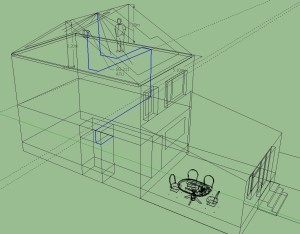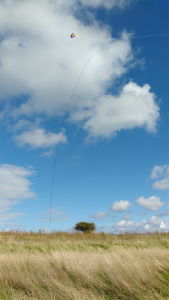The home station (G7UHN)

There are several major constraints to my radio operation at home (no room or desk space to dedicate to radio, limited possibilities on outdoors antennas and limitations on my time) and my systems are put together to work around these limitations.
All of my radio equipment at home is hidden away into unseen areas, what I like to call the equipment spaces, and accessed via my home network using various techniques including serial-over-IP, audio and video streaming.
My HF transceiver, an Elecraft K2, is tucked into a utility cupboard and a pair of Raspberry Pis provide network access to its audio interfaces, serial control port and a live video monitor of a power/SWR meter, the setup is described over on this page. The cupboard has two RG213 coaxial cables routed up to the loft where the antennas are fed.

General coverage HF and V/UHF receive duties are performed by a pair of low cost RTL-SDR dongles, one with an HF upconverter, and a pair of BeagleBone Black embedded Linux computers act as TCP servers for the receivers. These devices are located in the loft and that part of the setup is described over on this page.
All of the Raspberry Pi’s and BeagleBones are connected to the home network by wired Ethernet cable to ensure the best possible streaming experience.
The radios are all accessed across the network from a 17″ laptop PC running Linux. I’ve written a simple control panel GUI to bring the various threads of controlling the hardware and software together. So, no dedicated ‘shack’ but instead a ‘virtual shack’ that can be quickly activated and run across a large Linux desktop. Although radio conditions aren’t anything special at the time of recording, the video below gives you an idea of how the system is operated (best viewed full screen at 1920×1080, you might have to push some buttons in YouTube to get it to display in HD):
Portable equipment (G7UHN/P)

Away from home I have a variety of equipment that I might be using portable. For HF I might be using my Elecraft K2 or a Yaesu FT-857D transceiver, the interesting part is more likely to be the antenna – waterside vertical antennas and kite-supported antennas are things I’m playing with at the moment. I’m enjoying playing around trying to get effective portable setups that make the best advantage of my local waterside and hilltop locations.

